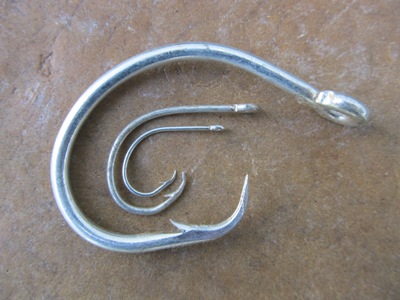
Although often misunderstood, circle hooks have become standard equipment for both freshwater and saltwater fishing.
They are especially useful when fishing live baits such as spot, eels, minnows, shrimp, and others.
Because of their jaw-hooking properties, circle hooks are extremely popular for shark fishing and other fisheries where fish will be released. Circle hooks are also rigged with ballyhoo for catching marlin and other billfish.
Although many types of hooks are marketed as “circle hooks”, only a few designs cannot be truly classified as such. By definition circle hooks have a circular bend and barb, and absolutely no offset. Rather than snagging fish, circle hooks work through a unique action.
When a circle hook is swallowed, it is usually carried down into the gullet. As pressure is applied to the line, the hook begins sliding up towards the fish’s mouth. As the fish swims in the opposite direction, the hook continues to pull freely until it reaches the jaw. The circle hook’s design causes it to pivot as it passes over the jaw, usually catching in the corner of the mouth. As pressure is increased, the hook penetrates deeply into the fish.
To use circle hooks correctly, anglers must train themselves to resist the urge to snatch the rod. Instead, the rod is lowered and steady pressure applied until the hook is embedded. In most fisheries, the fish does most of the pulling.
In situations where the fish does not run when it takes the bait, the angler must reel in line while slowly but steadily increasing pressure. If the rod is jerked at any time prior to hookset, the hook is likely to be pulled free.